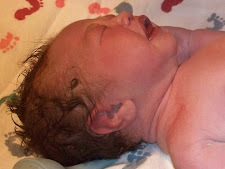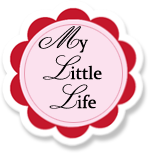 The appearance of your baby's first tooth — usually between 4 and 7 months — can be an exciting but trying time. Even before they emerge, teeth can make your baby's gums swollen and painful, causing crankiness and night waking. Teething can also cause excess drooling. Some babies are barely affected by teething, while others are fretful for days or weeks at a time.
The appearance of your baby's first tooth — usually between 4 and 7 months — can be an exciting but trying time. Even before they emerge, teeth can make your baby's gums swollen and painful, causing crankiness and night waking. Teething can also cause excess drooling. Some babies are barely affected by teething, while others are fretful for days or weeks at a time. To ease your baby's pain: Try rubbing a clean finger along your baby's gums. You can also give him a chilled, damp washcloth to gnaw on. Or try a rubber teething ring or teething toy. (Placing it in the refrigerator or freezer for a few minutes can make it feel even more soothing.)
Consult your doctor before giving your baby any medication. Oral numbing gels or creams (such as those that contain benzocaine) may provide temporary relief to your baby's gums but may also, on rare occasions, interfere with his gag reflex or cause an allergic reaction. Never give baby aspirin or rub it on your baby's gums.
To treat a teething rash: If you see redness on your baby's chin and lower lip, it could be that the constant drooling is irritating his skin. Gently wipe away drool with a cotton cloth (don't rub) and apply petroleum jelly to the affected area before he goes to sleep.
To avoid future problems: The appearance of teeth signals the need to start thinking about good dental hygiene. Your baby's doctor will probably examine new teeth. Some experts advise using a wet washcloth or gauze to wipe your baby's gums and teeth two or more times a day, although not doing so isn't likely to do your baby any harm.
Source; email.BabyCenter
When Does Teething Start?
All babies are not the same, so predicting when your child will begin teething - and recognizing the signs of teething - isn't an exact science. Some children are born with one or two teeth already protruding, whilst others will not have their first tooth until around one year of age. Having said that, the diagram below does give an indication of what teeth will erupt first and what teeth will be the first to fall out.

As much as you love your baby's toothless grin, you're going to go nuts when his first tooth pops in--anywhere between 4 and 8 months. Your baby is born with a set of 20 teeth hidden beneath the gums. Teething is the process of these teeth working their way through the gums. The first teeth normally appear between six and 10 months of age with the rest following over the next two to three years. Teeth usually emerge in pairs. This is a guide; each child is different.
It is important that these first teeth are kept healthy, as they each keep a place for the adult teeth that come later. The natural loss of a baby's first teeth and arrival of adult teeth usually happens between the ages of six years and 12 years. The first adult molars to appear are four molars. They come in behind the baby molars.
The process of teething can usually be broken down into five distinct stages - although some babies will not follow this at all.
Stage 1. Teething discomfort can start well before teeth even come through. You can often feel the teeth that are about to merge; gently run the tip of your finger over your baby's gums. You should be able to feel the teeth just below the gum.
Stage 2. The first four teeth (the incisors) are usually the first to appear. seeing the emergency of the first tooth is often a happy occasion for parents. Teeth often emerge in pairs. It is usually the two upper teeth that erupt first.
Stage 3. The first molars follow next - they sit right behind the canine teeth.
Stage 4. The cannines then follow.
Stage 4. The second molars are usually the last to appear. For many babies, the emergence of these large teeth can often be the most painful.














1 comments:
pwede butangan chat box dinhi..ahheheeh..ni request!
Post a Comment